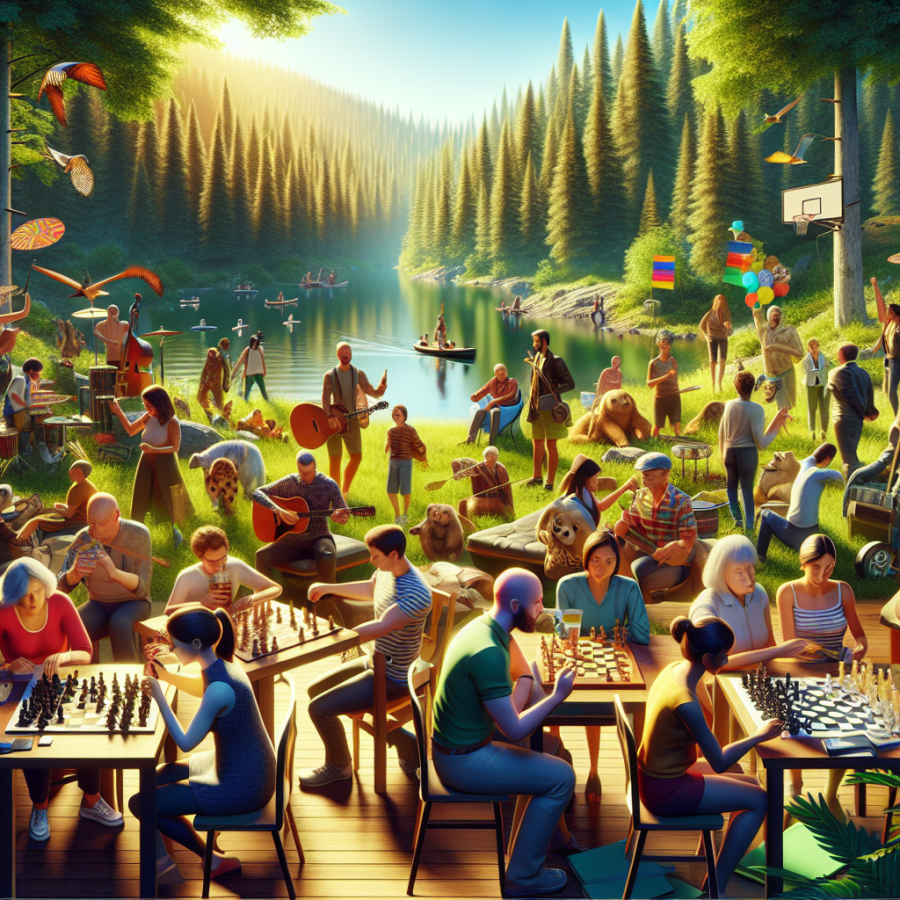The Influence and Consequences of Recreational Clubs on Present Society
Recreational clubs have become a significant part of modern society. By fostering a sense of community and promoting segregated interests, these clubs have changed the social landscape in many ways. One of the most significant influences they have is on cultural participation, the practice of engaging in activities that relate to one's cultural background or interests.
Recreational clubs cater to a wide range of cultural activities, from book clubs to music festivals, all carefully curated to cater to the unique interests and tastes of different demographics. This pooling of cultural interests has proven beneficial in both promoting and preserving cultural diversity. This can be seen in ethnic clubs that preserve traditional art forms and practices that might otherwise have been lost in the rave of globalization.
The digital age has also had a transformative impact on how recreational clubs operate, especially in terms of accessibility. Thanks to social media platforms and websites, it has never been easier to find and join a club that matches your interests. This virtual accessibility of recreational clubs has also led to the creation of online communities. These communities act as an excellent buffer to the physical barriers that may hinder participation, like geographical isolation or physical disabilities.
Furthermore, the increasing popularity of recreational clubs has revitalized the local economy. The rise of such clubs have created venues for local artists, artisans, and businesses to showcase their talents and products, stimulating local spending and drawing tourist dollars. This economic impact has encouraged cities and municipalities to support the establishment and perpetuity of these recreational clubs.
On the downside, however, there are arguments that recreational clubs can also act as isolating forces within the community. Due to their specific focus and distinct membership demographics, these clubs can create friendship cliques which might limit the social scope of an individual. Moreover, the costs associated with participating in these clubs - such as membership fees, equipment costs, travel expenses, etc. - may further limit access to only those who can afford it, potentially contributing to societal inequalities.
The emergence and influence of recreational clubs in modern society highlight the evolving nature of social behavior and engagement. Being a part of a club pushes an individual to involve themselves beyond their immediate surroundings, thus increasing their social and cultural understanding. But as they continue to redefine societal interaction, the challenge remains to ensure they are inclusive platforms that foster community cohesion and do not further societal divisions.
Read also:
The Journey to Success: Insights from Competitive Athletes"
Understanding the Ascendancy of Recreational Clubs in Contemporary Lifestyle
In recent years, recreational clubs have become increasingly crucial as hubs for social activity, leisure and fitness. These establishments have become more popular as people hunt for unique experiences and communities where they can share their interests. As a result, clubs are steadily marking their ascendancy in contemporary society as avenues for networking, entertainment, and improved wellbeing.
To fully understand why recreational clubs have become so integral to contemporary lifestyle, one has to consider the factors propelling their rise. Changes in social habits and lifestyle are among the significant influences that have led to the prevalence of these clubs. We lead lives entrenched in professionalism and work-related tension. To balance this, the natural approach for most people is to seek out leisure and fun activities that provide escape, relaxation, and rejuvenation. Recreational clubs offer the ideal environment for achieving this.
Furthermore, technological advancements have played a role in popularizing recreational clubs. Findings show that modern clubs employ advanced technology in their premises to enhance user experience. This has attracted a broad demographic, especially the tech-savvy younger generation. Functionalities like online booking systems make it easier for members to reserve facilities for specific activities. Advanced fitness equipment, virtual reality games, and cutting-edge entertainment systems also contribute to the attractiveness of these clubs.
The sprouting up of recreational clubs has also been fueled by the rise of fitness culture. Today, more individuals are health-conscious than ever before. Societal campaigns stressing the importance of regular exercise combined with an increase in lifestyle-related ailments like obesity have led to heightened awareness regarding personal wellness. Fitness clubs provide people with a resourceful platform where they can engage in regular workouts while mingling with like-minded individuals.
Recreational clubs have also seen their prominence rise thanks to their potential to build strong communal ties. As cities and towns grow and individuals get busier with their personal lives, creating new interactions and friendships have become challenging. These clubs act as an antidote to this situation by bringing people from diverse backgrounds together.
Moreover, focusing on the impacts of recreational clubs reveals a broad array of benefits. One salient benefit is the promotion of wellbeing and fitness among members. Regular participation in club activities often translates into an active lifestyle, which is beneficial for both physical and mental health.
Additionally, recreational clubs foster a sense of community among their members. Regular interactions in these clubs can lead to the forging of networks and relationships extending beyond the club premises.





